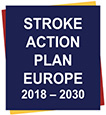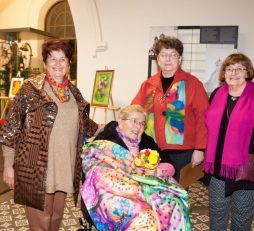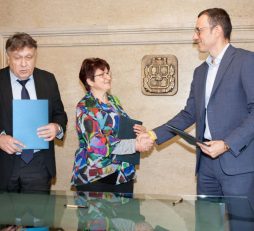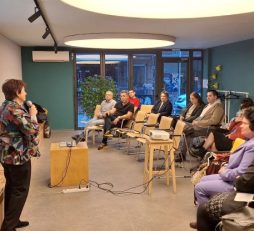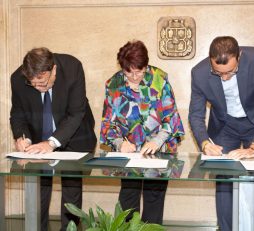EU Parliament Event: Report and highlights from "Closing the gaps in stroke care"
Following our successful European Parliament event, ‘Closing the gaps in stroke care: A call to action for Europe’, we are pleased to share a summary report and video highlights capturing the key discussions and messages from the day.
The event brought together MEPs, policymakers, healthcare professionals, researchers, people with lived experience and advocates to call for stronger EU and national action on stroke prevention, treatment and long-term support.
Watch messages from Members of the European Parliament:
MEP Romana Jerković (S&D, Croatia)
MEP Adam Jarubas (EPP, Poland)
More information about the event:
Read the event summary report
View event video
Together, these materials capture a growing consensus across Europe, that stroke must be recognised as a central priority in the upcoming EU Cardiovascular Health Plan and across all national health strategies.
Bulgaria Establishes a National Stroke Awareness Day
Five years after Dorina Dobreva set out to create Bulgaria’s first national patient organisation for stroke survivors, her vision has become reality.
On November 11, 2025, Bulgaria marked a National Stroke Awareness Day for the first time, established at the initiative of ASA-Bulgaria, a milestone toward a unified national policy for prevention, treatment, and life after stroke. The founder and Chair of the Association for Stroke and Aphasia (ASA-Bulgaria), also National Coordinator for the Stroke Action Plan for Europe, Board member of the Stroke Alliance for Europe (SAFE), and member of the Campaigns Committee of the World Stroke Organization (WSO), now leads the effort that places Bulgaria firmly on Europe’s stroke map.
Each year, over 50,000 Bulgarians suffer a stroke — among the highest rates in Europe. About 10% die during the acute treatment phase, and another 22% within the first year. More than half of survivors live with long-term disability, underscoring the urgent need for coordinated national action. The initiative has received strong international recognition and endorsement from the world’s most influential stroke and aphasia organizations, acknowledging Bulgaria’s leadership in patient advocacy and systemic change.
Read more about it here.
Stroke takes centre stage at a European Parliament event
On Tuesday 14 October 2025, stroke took centre stage at a European Parliament event in Brussels, where policymakers, people with lived experience, healthcare professionals, researchers, stroke support organisations and stroke advocates came together to call for urgent action to address lack of stroke research and persistent inequalities in stroke prevention, treatment and long-term care across Europe.
The recent World Health Organisation ‘Global status report on neurology’ highlights that stroke is the top neurological disorder contributing to health loss globally. Europe faces over 1.1 million strokes each year, causing nearly 460,000 deaths. Nearly 10 million people live with stroke’s long-term effects. The economic burden is immense and is projected to rise to €86 billion by 2040 without urgent reform. Stroke is the second leading cause of death and the leading cause of adult disability in Europe.
The event, “Closing the Gaps in Stroke Care: A Call to Action for Europe”, hosted by MEP Kelleher (Ireland) and MEP Jerkovic (Croatia), Stroke Alliance for Europe (SAFE) and the European Stroke Organisation (ESO), highlighted the critical need to act now and embed stroke as a key pillar into the upcoming EU Cardiovascular Health Plan and broader brain health strategies, and to use the Stroke Action Plan for Europe as the framework for this.
Read the full Press Release here.
Closing the Gaps in Stroke Care: A Call to Action for Europe
Stroke is Europe’s second biggest killer and the leading cause of acquired disability. Yet across the EU, stroke services remain fragmented and under-resourced, resulting in preventable deaths, lifelong disabilities, and a widespread lack of long-term support for survivors and their families.
On 14 October 2025, The European Stroke Organisation (ESO) and the Stroke Alliance for Europe (SAFE) will host an event at the European Parliament in Brussels to highlight these systemic gaps and introduce the forthcoming Stroke Action Plan for Europe (SAP-E). This upcoming plan will outline evidence-based, cost-effective solutions designed to improve stroke care across Europe.
The event, Closing the Gaps in Stroke Care: A Call to Action for Europe, will bring together:
- EU and national policymakers
- Stroke survivors and caregivers
- Healthcare professionals and researchers
- Civil society and public health partners
The speakers at the event will outline ways to provide comprehensive stroke care across the entire care pathway, from prevention and emergency response to rehabilitation and long-term support, with a focus on better aligning EU-level initiatives and national implementation, including through the upcoming EU Cardiovascular Health Plan (CVH Plan).
By uniting lived experience, clinical expertise and policy leadership, the event aims to ensure stroke receives the attention it urgently requires within Europe’s health priorities and that updated SAP-E becomes a practical roadmap for meaningful, measurable change.
Joint response to the EU Cardiovascular Health Plan Consultation
The European Stroke Organisation (ESO) and the Stroke Alliance for Europe (SAFE) have jointly responded to the European Commission’s public consultation on the forthcoming EU Cardiovascular Health (CVH) Plan.
With stroke being one of Europe’s leading causes of death and disability, we believe that it must be central to the EU’s strategy. Building on the Stroke Action Plan for Europe (SAP-E), we outline clear priorities to ensure that stroke is fully addressed within the EU CVH health plan to ensure that the people in the EU are supported at every stage, from prevention and acute care to recovery, research and life beyond.
Read the full consultation submission here.
EU Cardiovascular Health Plan consultation // Deadline 15 September 2025
The EU Commission has launched its Consultation on the EU CVH plan. The deadline is 15 September 2025.
The consultation strategy aims to ensure that all stakeholders concerned, and citizens have an opportunity to express their views and share insights on the problem to be solved, the key action areas proposed, and the likely impacts. It is a critical opportunity to ensure that stroke, from prevention and acute care to rehabilitation and life after stroke, is fully integrated into the EU’s future cardiovascular strategy.
Cardiovascular diseases, including stroke, remain the leading cause of death and disability in Europe. The CVH Plan aims to:
- Prevent disease by addressing unhealthy behaviours and reducing risk factors
- Improve early detection and screening through EU-wide protocols, digital tools, and personalised treatment
- Enhance management, care, and rehabilitation, including non-medical long-term support for survivors
The plan will also explore the potential of emerging technologies, data-driven approaches, artificial intelligence and the European Health Data Space to create more predictive, personalised and equitable care.
Your input can help highlight the burden of stroke in your country and the urgent need for stronger EU action.
Submit your feedback by 15 September 2025 by selecting “Give Feedback” on this page.
Congratulations to Kyrgyzstan on signing the Stroke Action Plan for Europe Declaration!
Congratulations!
Kyrgyzstan has become the 15th country to endorse the Declaration for Action on Stroke and enact the Stroke Action Plan for Europe, bringing the country another step closer to guaranteeing the highest standard of care and support for stroke patients.
The document summarises the aims of the implementation of the Stroke Action Plan for Europe and by signing it, the governmental bodies in each country manifest their commitment to acknowledge that cerebrovascular diseases, including stroke, are among the major causes of premature death long term disability, and cognitive decline in the adult population of Europe, and that many strokes are preventable and treatable with evidence-based and cost-effective strategies ; support the Stroke Action Plan for Europe with the four overarching targets for 2030 and align with the WHO Global Action Plan for Prevention and Control of Noncommunicable Diseases 2013-2020.
Find out more about the Declaration on this page.
2024 SAP-E Annual Status Report : Achievements, Challenges, and Future Directions
The Stroke Action Plan for Europe provides a basic road map and sets targets for the implementation of evidence-based preventive actions and stroke services covering the whole stroke pathway until 2030. The 2024 status report will dive into this year’s achievements, and provide an overview of the current status and latest updates:
- Organisation of the second in-person National Coordinators meeting in Lisbon
- Publication of the half-time achievements and success stories from the Stroke Action Plan
- The EU MEP Election Manifesto 2024 asking MEP candidates to support improving health across the EU
- Continuous work on the update of the “Action Plan for Stroke in Europe” to a 2.0 version with the support of all Domain group members
- Signature of the SAP-E Declaration by two new countries
- Communication campaign and joint ESO-SAFE statement on 2024 European Stroke Awareness Day
Read the Annual Report here.
Half-time achievements and success stories from the Stroke Action Plan
Stroke is one of the most enormous burdens to healthcare services. Despite all combined efforts, it affects more than one million people annually in Europe.
Although there is abundant knowledge regarding stroke prevention and treatment, still remains a significant gap between the theory and real-world stroke care, even in the most developed European countries. The Stroke Action Plan-Europe (SAP-E) demonstrated in its first 5 years a massive inequality in providing stroke care in Europe. The disparity exists not only among different countries, but also inside every respective country in different regions.
To know more about how the SAP-E has been advocating for better stroke care outcomes since its inception and playing a crucial role in shaping stroke care practices in Europe, read the latest update here.
Malta becomes the 14th country to sign the Stroke Action Plan for Europe Declaration
Congratulations!
We are very pleased to announce that Malta is the 14th country to endorse the Declaration for Action on Stroke and enact the Stroke Action Plan for Europe, bringing the country another step closer to guaranteeing the highest standard of care and support for stroke patients.
Stroke remains one of the leading causes of death and disability in Europe, and projections show that with a ‘business as usual’ approach, the burden of stroke will continue to increase by 25 % in the next decade and beyond. To drastically reduce the burden of stroke and its long-term consequence, we convened to review the scientific evidence and the state of current services and to set targets for the development of stroke care for the decade to follow. The SAP-E Declaration lists all 12 Key Performance Indicators in order to monitor and facilitate change.
Find out more about the Declaration on this page.

